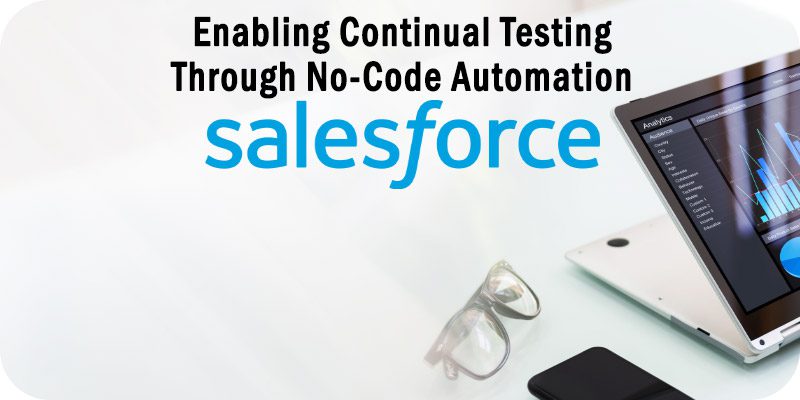Enabling Continual Salesforce Testing Through No-Code Automation


As part of Solutions Review’s Contributed Content Series—a collection of contributed columns written by industry experts in maturing software categories—Christian Brink Frederiksen, the CEO of Leapwork, shares insights into the ways no-code automation can help companies improve how they test and maintain their Salesforce systems.
Salesforce is a fundamental SaaS application for more than 150,000 companies around the globe. And one of the reasons that it’s such a popular, core CRM and sales automation platform is that it’s highly customizable and can be integrated with hundreds of other software applications. These custom-built Salesforce use cases are constantly changing with regular seasonal releases, meaning organizations that use the CRM system must be vigilant about testing the software.
As the Salesforce platform grows and integrates with other systems, users must ensure that these changes don’t introduce errors that lead to potentially disastrous software failures. If a core system like Salesforce stops working, sales, marketing, and customer success teams will grind to a halt, leaving the organization open to the risk of customer churn. Every second of downtime can affect revenue.
Customizations and integrations require constant testing, and regression testing is the key to ensuring that all runs well after an update or customization change. However, continuously testing everything—all while the implementation changes under their noses—is an impossible task for QA. It’s not a problem that businesses can solve by hiring additional personnel, assuming they could even find them in this tight labor market. For Salesforce application teams, every new update, feature, or integration change exponentially increases the amount of testing work. Getting behind is not an option.
The Automation Conundrum
The solution is automation, but many organizations still struggle to use it for testing. In the 2021-22 World Quality Report from Capgemini, just 46 percent of the 1,750 senior IT managers they interviewed said they maximize test automation, and only 44 percent integrate tests as automatic quality gates in the CI/CD pipeline.
There’s a good reason few organizations say they have maximized test automation and made automated testing a triggered condition of moving code to the next stage of the CI/CD process: it’s too complex for business users. Most test automation software requires significant coding skills, even the ones that claim to be low-code. It limits collaboration on testing to only those who can interpret and create code. Plus, even in a low-code test environment, testers will still need the assistance of people with technical skills to set up the system, which introduces a gating factor that slows down the process.
Salesforce adds some additional complexity to the picture. For example, their HTML structures are constantly changing, which makes the process of reading, writing, and validating different kinds of data complicated and fragile. As a result, maintaining and scaling an automated testing process with Salesforce ironically becomes a highly manual process that requires constant attention to ensure that changes to HTML structures don’t break the tests. Additionally, with a testing platform that involves code, the maintenance burden grows with the scope, making it impossible to scale.
No-Code Test Automation
No-code, AI-powered test platforms address these issues. Technologies such as intelligent field recognition make it simple to read data from one source, such as a green screen terminal or SAP client, and then validate it in a web browser against a Salesforce page. And when tests can be set up in a point-and-click, flow-chart model, the process is intuitive for testers, coders, and business users. This doesn’t mean tests cannot be set up using code, but they don’t have to be.
As a result, test automation can be democratized with technical and business experts collaborating on design, execution, maintenance and scaling. Including business process experts in these automated tests is a massive advantage because they know better than anyone exactly how people on the business side will be using Salesforce and apps that integrate with it.
Continuous testing for custom-built Salesforce implementations doesn’t have to be an impossible task. The combination of automation and a no-code platform can not only make continuous testing a reality. It also makes it possible to scale and include stakeholders’ expertise previously locked out of the process because of the need to code. The result is a Salesforce implementation that is much more reliable and an organization that feels more comfortable innovating and improving the platform, bringing more value to everyone.




















